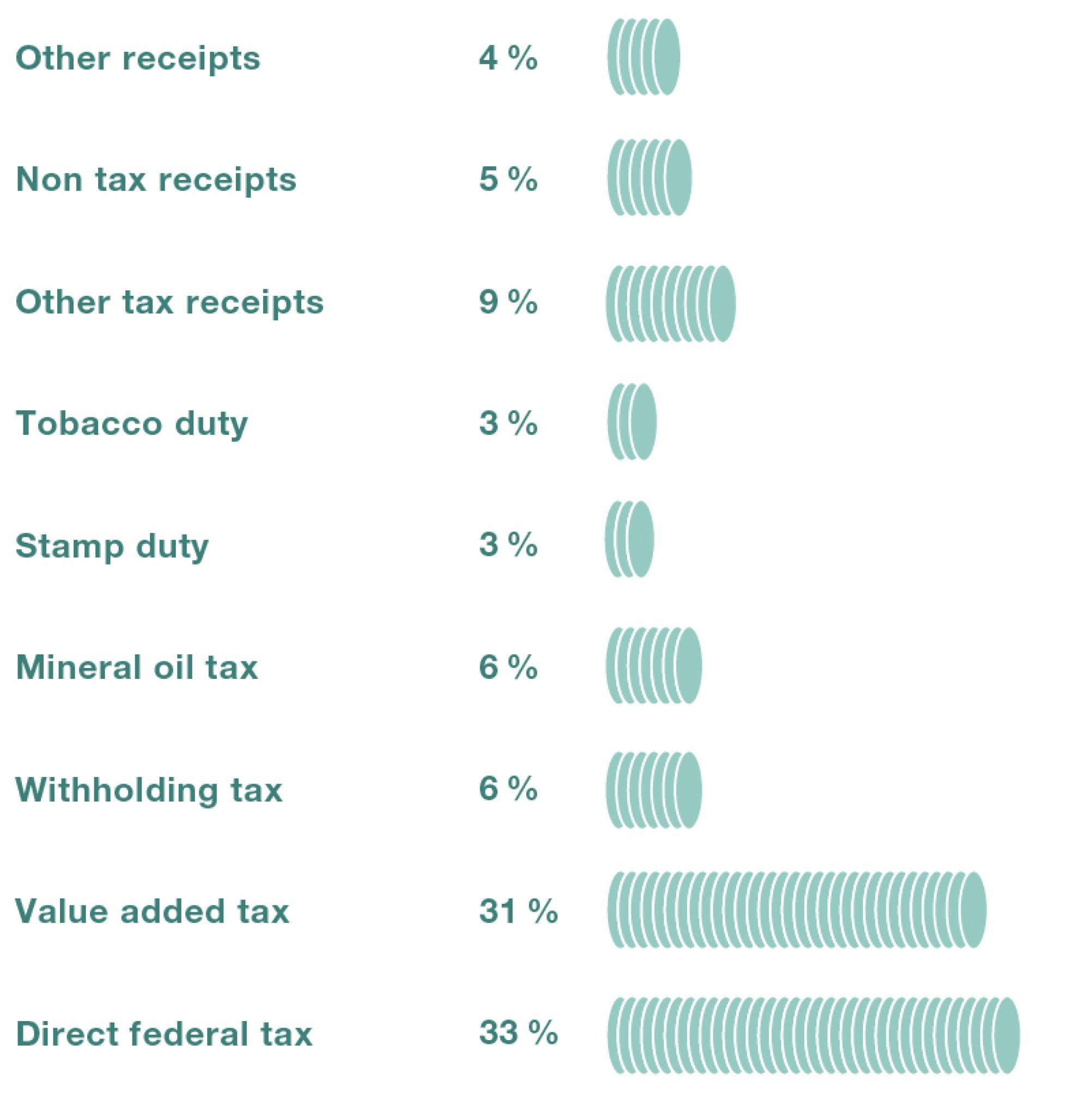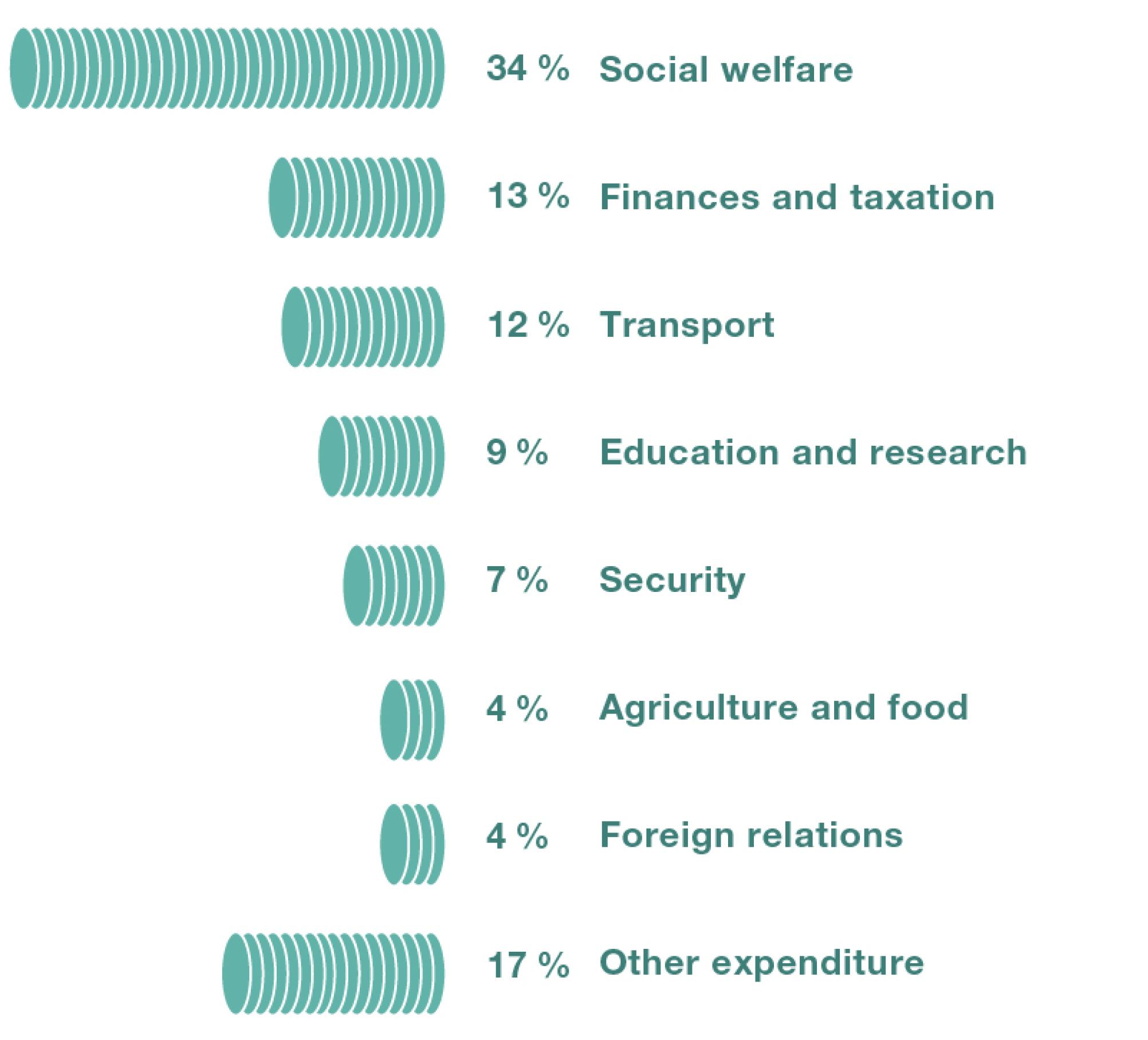The Government
The
Federal Council is Switzerland’s government. It consists of seven members, who take decisions and defend their decisions in a
collegial manner. The presidency rotates every year. The Federal Council is assisted
in its tasks by the Federal Administration. The Confederation’s expenditure may
not exceed its receipts over the longer term: this is ensured by the debt brake
mechanism. The budget is decided by Parliament.
Federal finances: Parliament has the final say
In order to fulfil its tasks, the Confederation needs money. The Federal Constitution sets out what taxes the government can raise. When it comes to spending money, the Federal Council cannot just do as it sees fit: there is a legal basis for every item of expenditure that is the result of a democratic process. Parliament has sovereignty over federal finances: it decides the budget and approves the state financial statement of the previous year.
Debt brake mechanism
The Confederation is required to balance its expenditure and receipts over the longer term. It is required to run a surplus when the economy is thriving and may spend more than it collects in receipts when the economy is weak. The debt brake does allow for an exception to be made in extraordinary situations such as serious economic crises and natural disasters; the government may then undertake additional expenditure.
Extraordinary expenditure
The COVID pandemic resulted in additional expenditure for the Confederation. To combat the pandemic and mitigate its effects, the Federal Council and Parliament adopted numerous measures in 2020/2021: short-time work compensation, hardship measures for companies, COVID tests, subsidies for sport, culture and tourism, etc. That is the main reason why the Confederation ran a deficit of CHF 12 billion in 2021.
Federal receipts 2021

Receipts of 76 billion
The federal government's main sources of receipts are direct federal tax and VAT. Direct federal tax is raised on the income of private individuals (progressive, max. 11.5%), and on business profits (8.5%). VAT is 7.7% on most goods and services (8.1% from 2024).
Federal expenditure 2021

Expenditure of CHF 88 billion
One third of federal expenditure is spent on social welfare. 43% of this goes to old-age provision (OASI), 13% to invalidity insurance (II). In addition, there are supplementary benefits, unemployment insurance (UI), premium reductions for health insurance and expenditure related to the costs of migration.
Political party composition of the Federal Council since 1948

1848
The Federal
Council was composed of seven members of the Free Democratic Party (today FDP.The
Liberals). The party governed alone for 43 years.
1891
The first member of the
Catholic Conservatives (today CVP) joined the government; the second joined in 1919.
1929
Parliament elected a member of the Farmers’, Trades’
and Citizens’ Party (today SVP) to the Federal Council.
1943
The first Social
Democrat (SP) entered the government; the second followed in 1951.
1959
The four strongest parties agreed to form a
government by applying the ‘magic formula’:
2 FDP, 2 CVP, 2 SP,
1 SVP. The formula remained unchanged for 44 years.
2003
At the Federal
Council elections, the SVP won a seat at the expense of the CVP.
2008
The two
representatives of the SVP joined the newly founded Conservative Democratic
Party (BDP).
2009
A member of the SVP was elected in place of a
retiring BDP representative.
2015
The BDP
representative stepped down. Parliament elected an SVP representative in her
place.
Since then, the Federal Council has again been composed of members from four different political parties – according to the 2:2:2:1 formula.